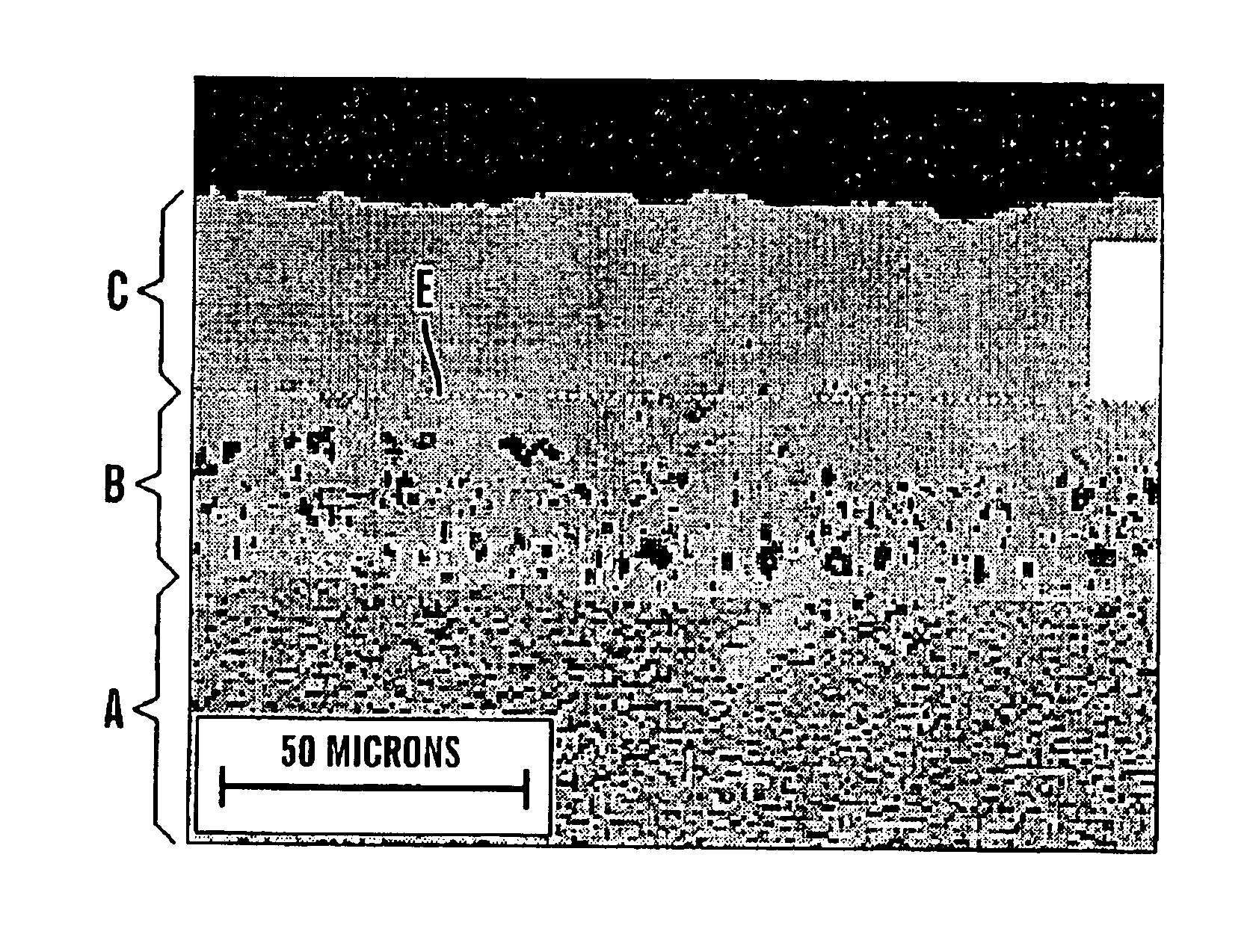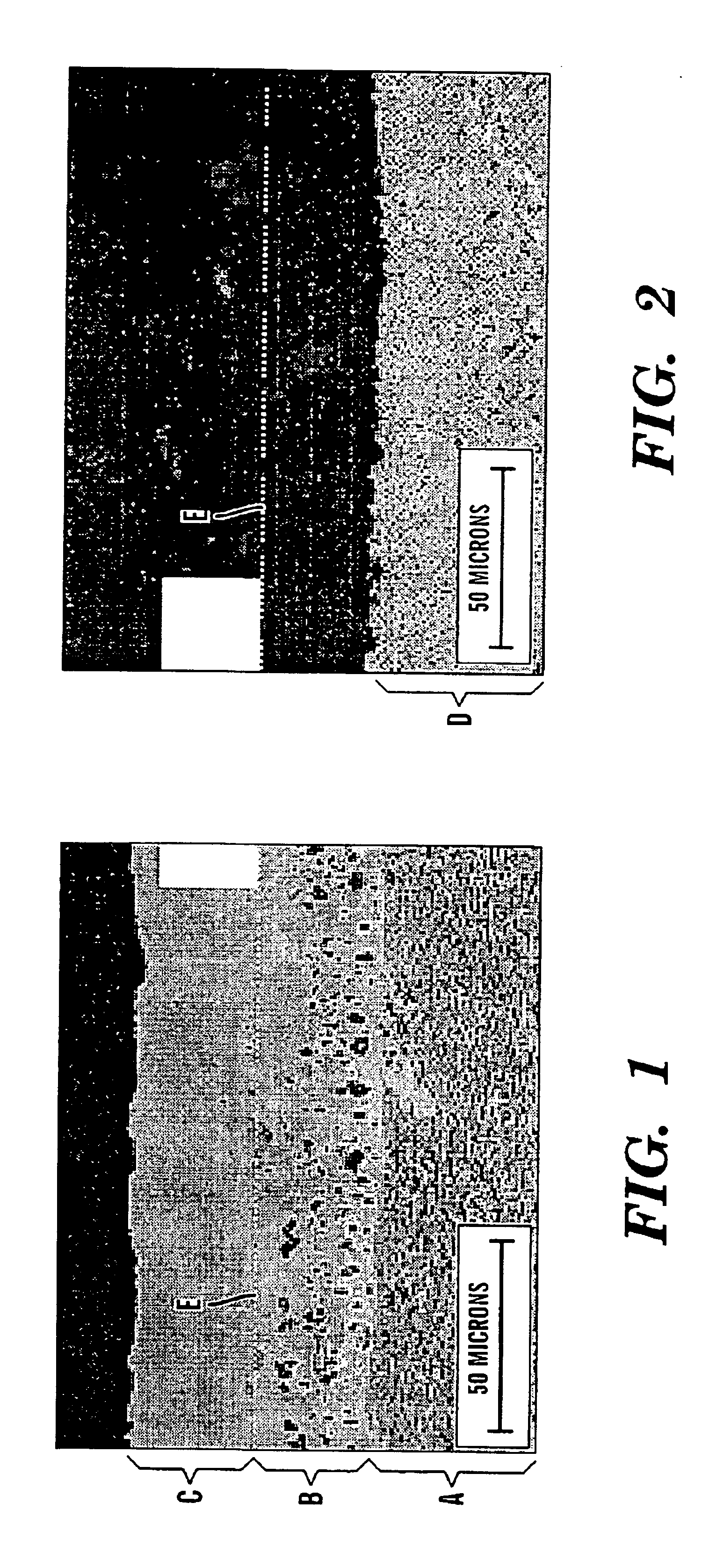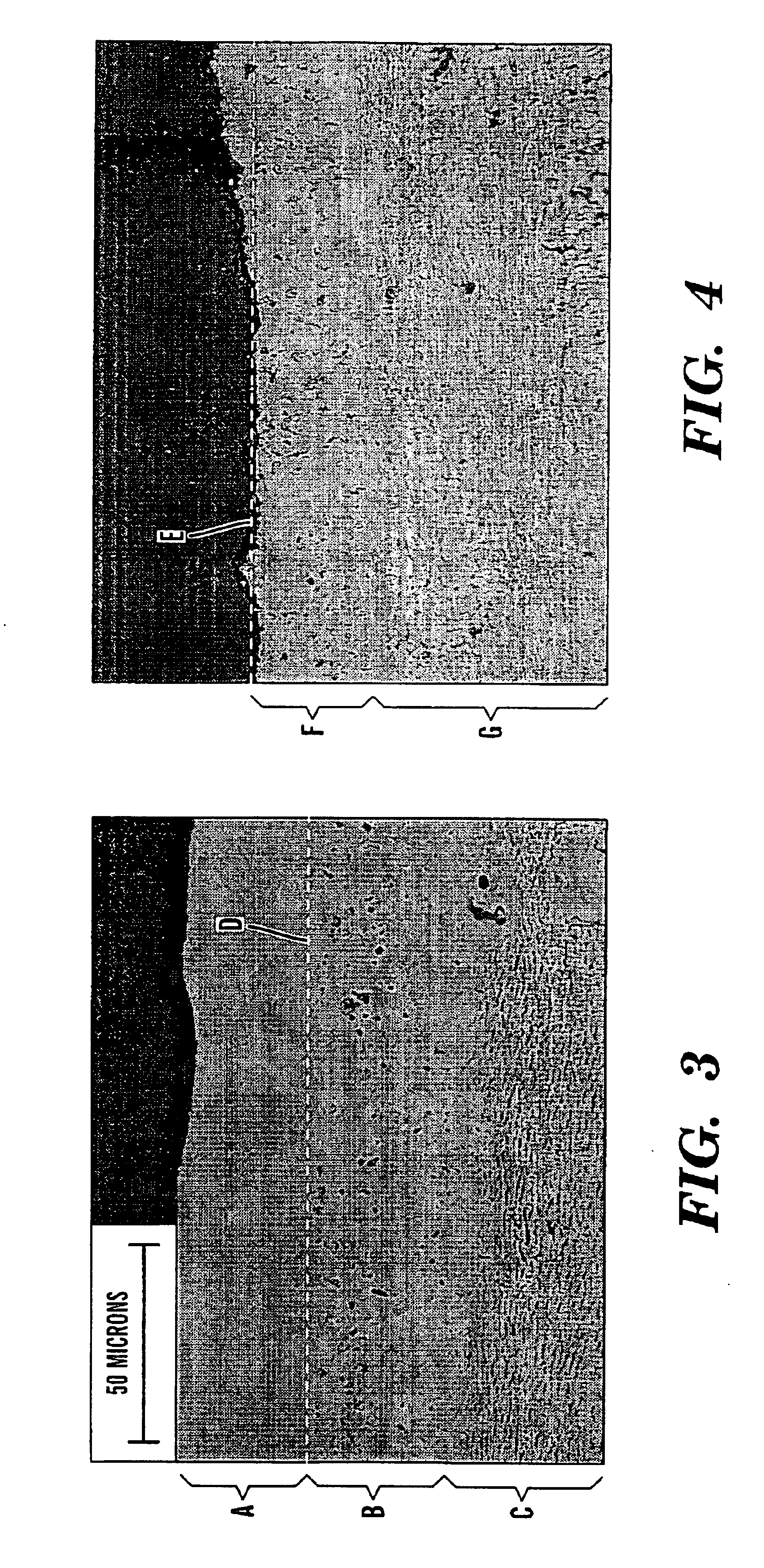Process for partial stripping of diffusion aluminide coatings from metal substrates, and related compositions
a technology of diffusion aluminide and metal substrate, applied in the field of diffusion coating, can solve the problems of not being able to endure long service exposure, still requiring repair necessitated by erosion and thermal degradation, and unable to completely remove the additiv
- Summary
- Abstract
- Description
- Claims
- Application Information
AI Technical Summary
Benefits of technology
Problems solved by technology
Method used
Image
Examples
example 2
Sections were cut from the airfoil of an aircraft engine blade on which a platinum aluminide coating had been applied. The coupon was then immersed in a bath containing 45-wt % hexafluorozirconic acid (H.sub.2 ZrF.sub.6) at 70.degree. C., for varying amounts of time. After the chemical treatment, the coupons were sectioned through the thickness of the wall, mounted in epoxy, and polished. Micrographs of blade sections treated for 0 minutes, 30 minutes, 60 minutes, and 120 minutes are shown in FIGS. 5-8. (The original surface of the substrate is indicated by the dotted line).
After 30 minutes of treatment, the additive sublayer was removed, and the diffusion sublayer was intact. (It is believed that removal of the additive sublayer actually occurred in less than 30 minutes, although a detailed examination was not undertaken within that interval). After 60 minutes, negligible removal of the diffusion sublayer had occurred. After 120 minutes, the diffusion sublayer was removed, but the ...
example 3
As in Example 2, sections were cut from the airfoil of an aircraft engine blade on which a platinum aluminide coating had been applied. The coupon was then immersed in a bath containing 45-wt % hexafluorozirconic acid (H.sub.2 ZrF.sub.6) at 45.degree. C., for varying amounts of time. After the chemical treatment, the coupons were sectioned through the thickness of the wall, mounted in epoxy, and polished.
Micrographs of blade sections, treated for 0 minutes, 20 minutes, 40 minutes, 80 minutes, and 120 minutes, are shown in FIGS. 9-13. (The additive sublayer is generally indicated by the upper double-headed arrow, while the diffusion sublayer is generally indicated by the lower, double-headed arrow). After 20 minutes of treatment, the additive sublayer was mostly removed, and the diffusion sublayer was intact. After 40 minutes, the additive sublayer was fully removed, and the diffusion sublayer remained intact.
After 80 minutes of treatment, there was little change in the appearance of...
PUM
| Property | Measurement | Unit |
|---|---|---|
| temperature | aaaaa | aaaaa |
| time period | aaaaa | aaaaa |
| thickness | aaaaa | aaaaa |
Abstract
Description
Claims
Application Information
 Login to View More
Login to View More - R&D
- Intellectual Property
- Life Sciences
- Materials
- Tech Scout
- Unparalleled Data Quality
- Higher Quality Content
- 60% Fewer Hallucinations
Browse by: Latest US Patents, China's latest patents, Technical Efficacy Thesaurus, Application Domain, Technology Topic, Popular Technical Reports.
© 2025 PatSnap. All rights reserved.Legal|Privacy policy|Modern Slavery Act Transparency Statement|Sitemap|About US| Contact US: help@patsnap.com



